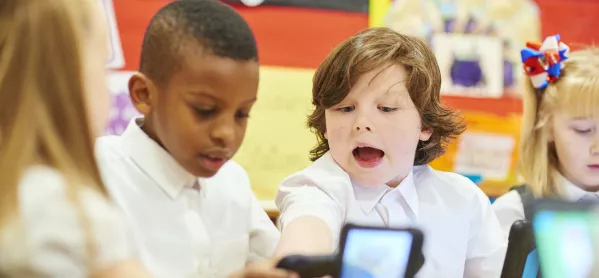A primary teacher in Scotland has compiled a list of the most popular apps in primary schools.
Blair Minchin, who works in Edinburgh, carried out a survey on Instagram and Twitter of primary teachers whose schools have iPads, asking them to share the top five apps used in their school’s classrooms.
He explicitly asked teachers for what apps are used the most, not what they considered the best apps.
After receiving 152 responses, Mr Minchin compiled a table of the most popular apps.
The top 9 apps in Mr Minchin’s survey are:
1. Sumdog
2. Seesaw
3. BookCreator
4. iPad camera
5. Pic Collage
6. Times Table Rockstars
7. Keynote
8. Kahoot
9. iMovie
Mr Minchin also posted a diagram featuring every app that got more than three mentions.
More for Blair Minchin: Pupil voice, wearing PE kit to school, the power of fun, speech recognition software in schools, and more
Coronavirus: 148 free resources for home learning
When play and tech combine: How our five-year-olds turned into news presenters
Edtech: How to use edtech to improve geography teaching
Quick read: How tech has helped our pupils with additional needs
WATCH: How a drone is helping children make the transition to ‘big school’
Opinion: Why I run a phone-free school - but won’t ban them
Mr Minchin found that iPads were most commonly used for maths and filming.
He also noted that coding and programming apps did not feature often, and surmised that iPads were more commonly being used for core curricular areas.
Thank you so much to everyone who fed into this wee bit of research.
Results from the ‘top 5 apps used in the classroom’ took me a while to compile but I’ve presented them in a couple of different ways and have some notes too.
Here are the top 10 pic.twitter.com/WQmZkgbXTm
- Blair Minchin (@Mr_Minchin) October 21, 2021
Responding to Mr Minchin’s survey, one teacher said: “The great thing about the majority of these apps is that they focus on student creativity and the creation of content.”
Another said that ”iPads are fantastic tools but there cannot be a presumption that educators know how best to use them without appropriate support”.




